An Anniversary Memorialized in Gold: The Rose Bowl Turns 100
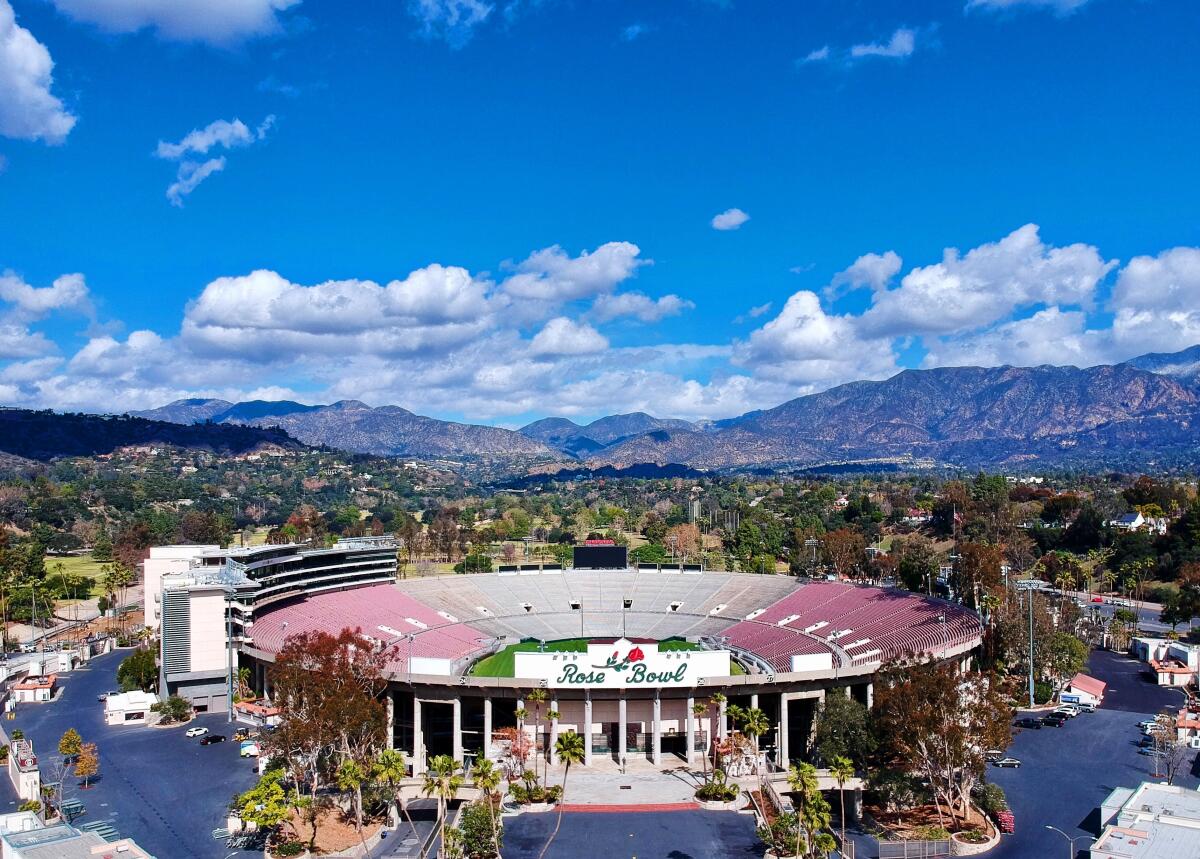
Tonight, you may see the lights of Los Angeles looking a little bit more golden. From the crown of the U.S. Bank Tower skyscraper to Union Station’s floodlights; from the gateway at LAX to Pasadena’s City Hall, from the L.A. Memorial Coliseum to the Banc of California Stadium, the city and greater City of Angels will be lit in gold lights in honor of the 100th birthday of the iconic Rose Bowl Stadium in Pasadena.
Synonymous with grand sporting events on a world stage and intertwined into the history of Pasadena itself, the venue has achieved the rare status of worldwide acclaim and is often among the first things that come to mind when people think of Southern California. Beyond the famous Rose Bowl Game® played every year on January 1st, the venue is host to international sporting events, huge concerts and music festivals, and is an invaluable resource for its local community.
The Stadium is a witness to history, constantly redefining the experience of live and televised sports. Beginning with the 1947 Rose Bowl Game®, television has brought Pasadena’s crown jewel into the living rooms of viewers across the globe.
First Steps
The history of the Rose Bowl dates back to the 1890s, when the Pasadena Valley Hunt Club was founded in Pasadena, calling itself a place for “ladies and gentlemen” who wish to spend their leisure time outdoors. Just two years later, the Hunt Club held the first ever Tournament of Roses® Parade and Games. On New Year’s Day, members paraded decorative horse-drawn buggies through the city and held a variety of feats of strength and guile, including a jousting competition. It would be another twelve years before football would be played as part of the celebration, with the sports still
in its infancy.
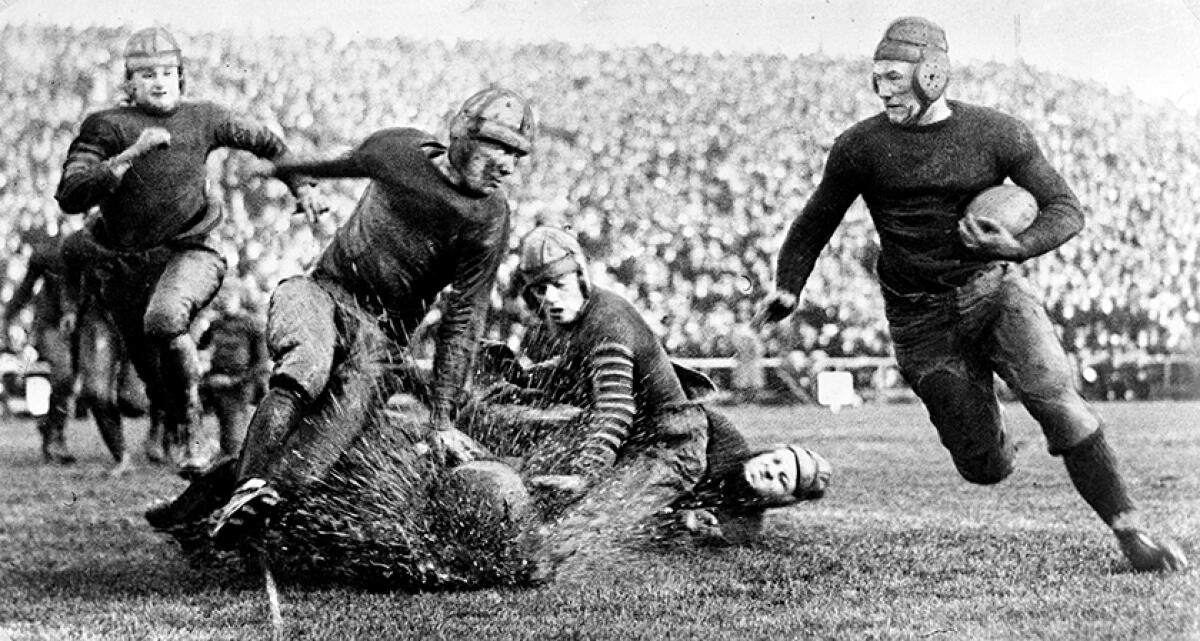
But in 1902, tradition changed forever when the Club held the first Tournament of Roses® East-West football game. The bicoastal match-up pitted Michigan against Stanford, with the lads from the Midwest wiping out Stanford 49-0, leaving organizers to reconsider their decision to host a football game on New Year’s Day – it would not return for sixteen years.
A Time to Build
When football returned in 1916, the sport had evolved and had become popular across much of the United States. By 1920, the National Football League had been established and concurrently, Tournament president William L. Leishman foresaw a need for a larger stadium to host the Tournament of Roses® Rose Bowl Game®. A parcel of land in the Arroyo, a lush park and greenbelt on Pasadena’s west end, would be the new home for its New Year’s Day tradition.
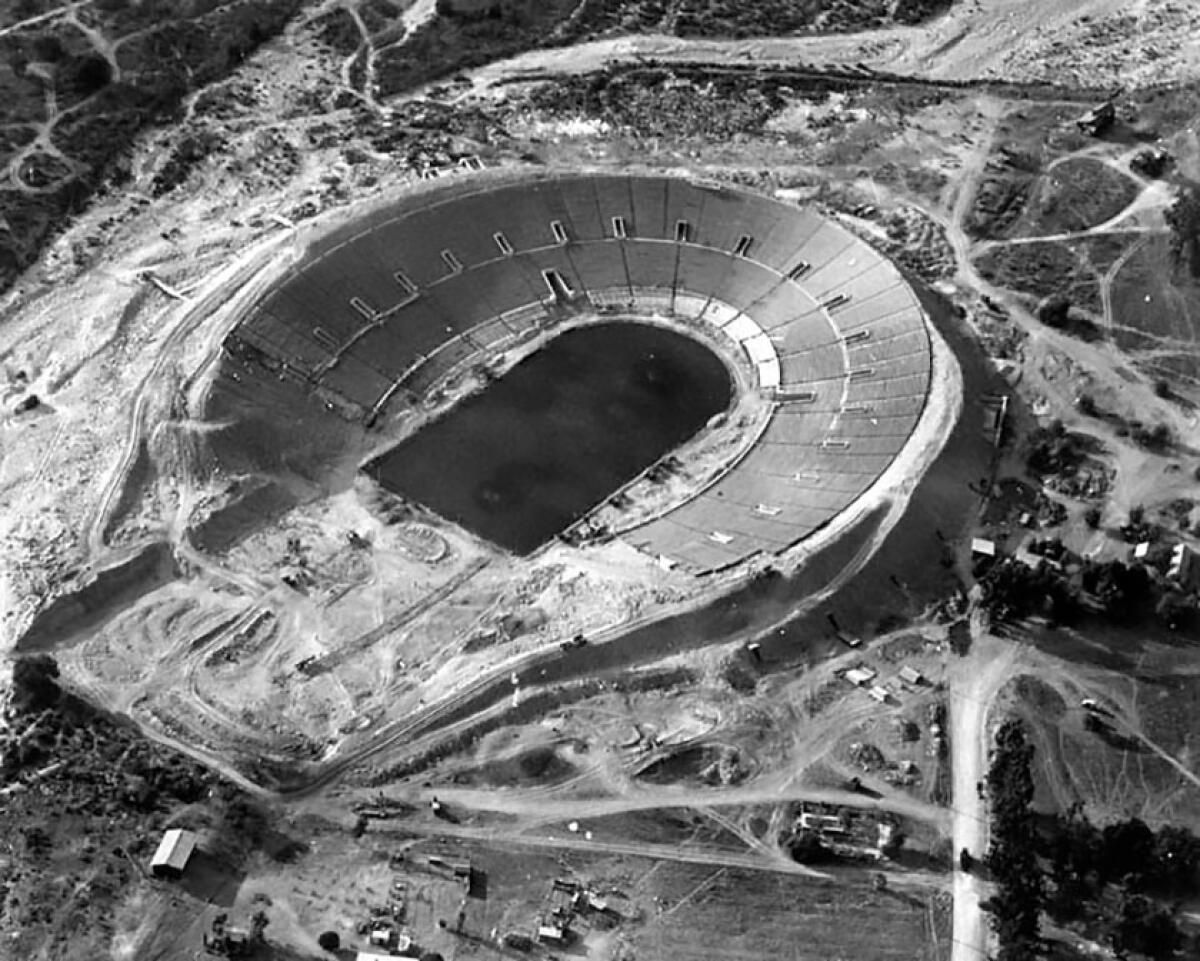
Enter architect Myron Hunt. Already well-known for his work on many projects around Southern California, including the recently completed Huntington Library, developed a plan for a horseshoe-shaped stadium holding 57,000 people, an enormous undertaking at the time.
By the Fall of 1922, the Stadium was complete and, officially dubbed the “Rose Bowl” despite its unfinished loop and hosted its inaugural Rose Bowl Game® on January 1, 1923. By 1928, the south end of the Stadium was completed enclosing the now-famous bowl.
A Global Draw
College football, the Tournament of Roses®, and the Rose Parade® grew as quickly as Greater Los Angeles went from being a pastoral seaside retreat to an international metropolis. Pasadena – and the Stadium – quickly found itself in world spotlight, playing host to the 1932 Olympic Games. By 1949, the draw of the Rose Bowl Game® led to the addition of more seats, bringing the total capacity to 100,983. The 1949 game became the first college football game to host more than 100,000 spectators.
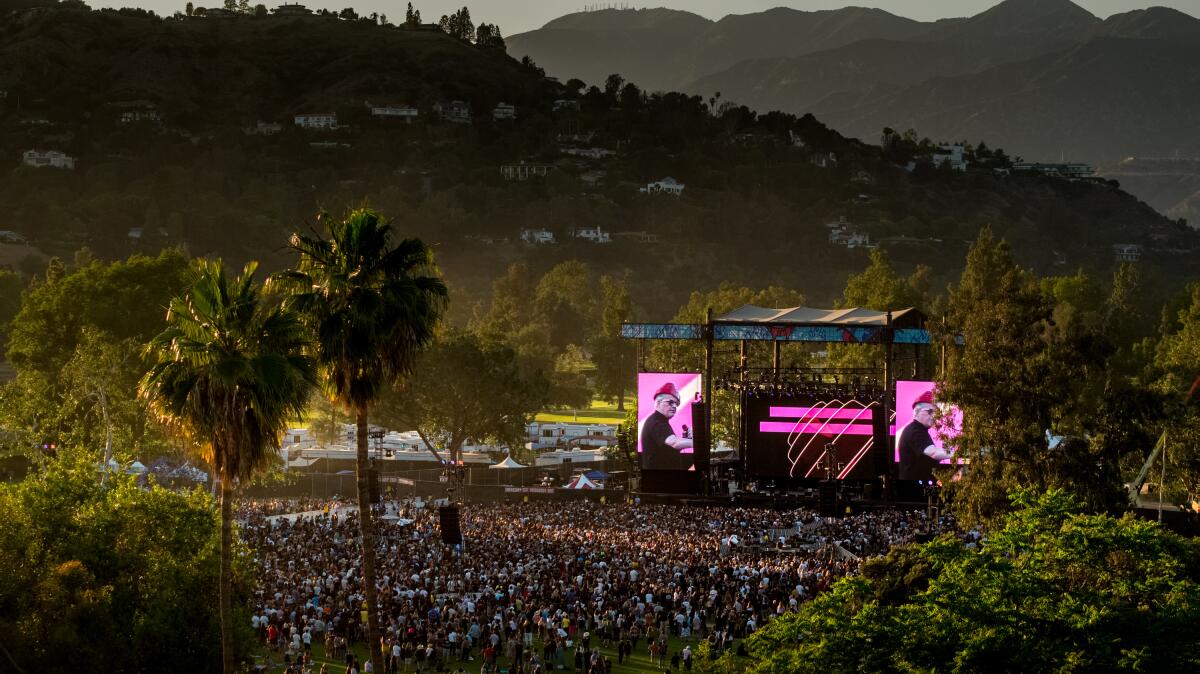
Throughout the 20th century and into the 21st, the Rose Bowl Stadium has offered worldwide firsts. From installing then-cutting-edge stadium lighting in the mid-1930s to being the first college football game broadcast in color in 1962, the site has been at both the forefront of technology and social firsts. The 1956 game was among the most racially integrated of the day, featuring a total of 13 Black players on the two competing teams.
So Much More Than Football
Of course, the Rose Bowl exists well beyond New Year’s Day and its signature event. Given its location in sunny Southern California, its prominence as a landmark venue, and its huge capacity, the Stadium has played host to Super Bowls, Olympics and the Men’s and Women’s World Cup.
But for many, their first trip to the Rose Bowl was to see some of the biggest musical artists in the world: the Rolling Stones; U2; Pink Floyd; BTS; Beyonce; Jay-Z; Justin Timberlake; Metallica; Rhianna; Eminem; Journey; and Depeche Mode, just to name a few.
The Reverend Billy Graham presided over 80,000 worshipers in 2004, and the Stadium has played host to movie premieres, including the football-themed 2000 film, “Remember the Titans.”
Of course, the Stadium has been the proud home of UCLA Football since 1982, hosting several games each season on its home turf, many of them woven into the fabric of UCLA lore.
A Centennial Celebration to Remember
While today may be the Rose Bowl Stadium’s official birthday, the Stadium began its Centennial Celebration earlier this year, with special events and a message to supporters to come together to ensure the national landmark is around for the next century. The party got started with a bang on January 1st, when a symbolic 100 seconds of fireworks were launched over fans at the Rose Bowl Game® between the third and fourth quarters. On August 13th, a “Party of the Century” was held on the Stadium’s field, featuring a “Roaring 20s” theme, with the proceeds benefitting the Legacy Foundation Centennial Campaign, which aids in the protection, preservation and enhancement of the Rose Bowl and its ground. The calendar of centennial events is one of the busiest in the Stadium’s one-hundred-year history, and included multiple international soccer matches, eight UCLA home games, community programming and amazing music festivals.
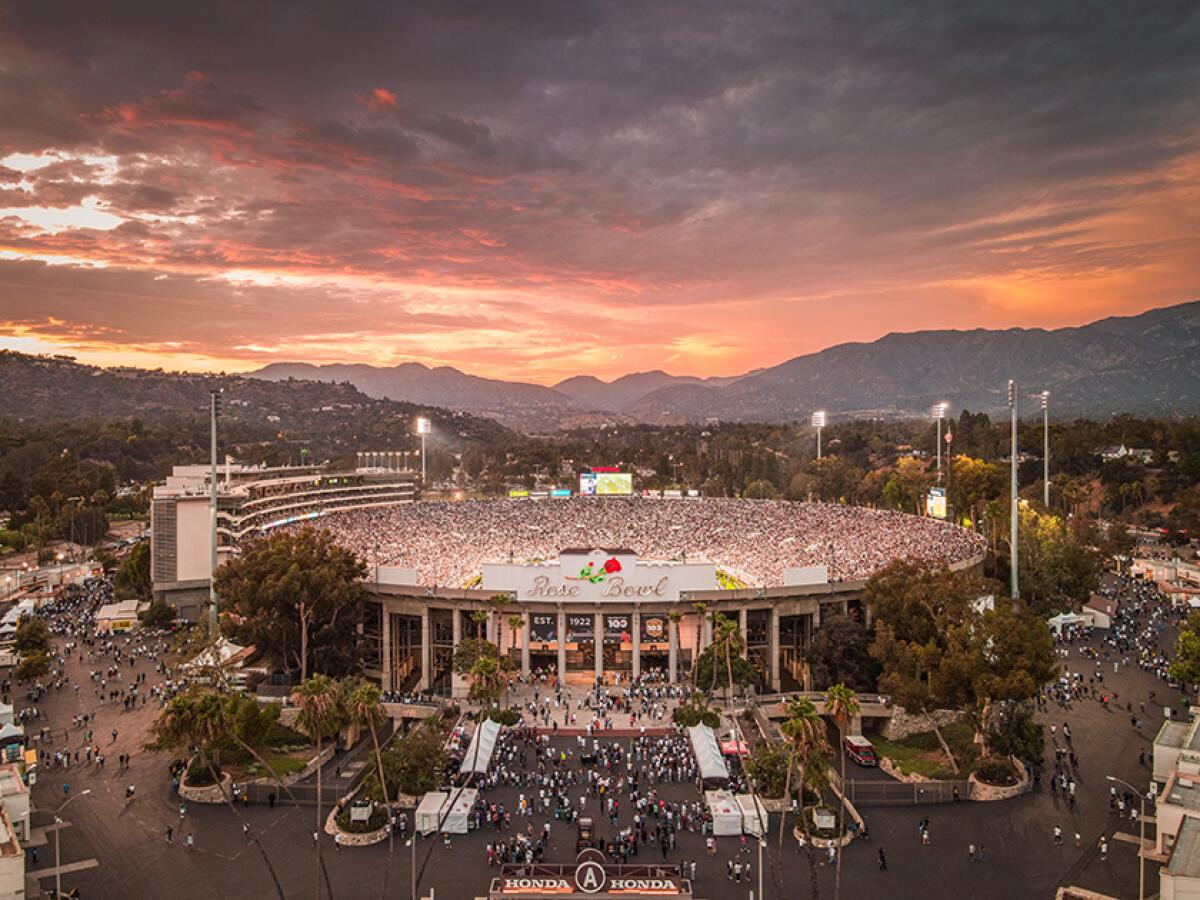
When the sun goes down tonight, look up to the sky and be amazed at the golden hues, celebrating the centennial of a Southern California icon.